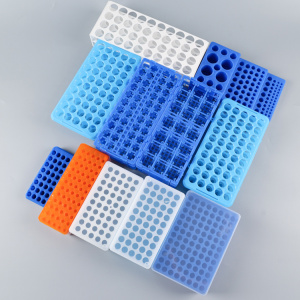How to choose a good centrifuge tube
Centrifugation is a physical separation analysis technique that uses relative centrifugal force (g-force) to separate and extract different particles in suspension by using the direct density difference of different substances.
There are many steps required for centrifugation in the separation, purification and preparation of laboratory samples, such as the separation of various samples related to cell research, clinical sample separation, food analysis, animal and plant sample analysis, and environmental sample analysis.
Different centrifugation applications have different requirements for centrifugal speed and centrifugal force, and it is necessary to select the appropriate centrifuge and rotor system, as well as the appropriate centrifuge tube consumables.

There are several factors to consider when selecting the correct conical bottom centrifuge tube, including:
1. Sample volume
2. Required relative centrifugal force
3. Compatibility of centrifuge tubes and rotors
4. Is there any effect on the sample, such as chemical resistance
Before choosing a centrifuge tube size, the desired sample volume should be determined. The sample size is determined by the rotors available in the laboratory and the requirements of the experimental protocol used. Generally, the centrifuge tube should not be overfilled, generally not more than 2/3 of the volume of the centrifuge tube, and never exceed the maximum capacity of the rotor. However, in some cases, such as when using ultracentrifugation, it is necessary to completely fill the tube to prevent failure.
All centrifuge tubes have maximum centrifugal force withstand values. If the centrifugal force exceeds this value, the centrifuge tube may rupture, resulting in sample loss and, in severe cases, damage to the centrifuge and rotor. Most protocols specify speed in revolutions per minute (RPM) or relative centrifugal force (RCF), and there is a conversion between them.

RPM refers to the number of times the rotor rotates per minute, while RCF refers to the relative centrifugal force. At the same RPM, the larger the centrifugal radius, the larger the centrifugal force generated. RCF is more relevant to the actual effects and outcomes of centrifugation than RPM. How to convert centrifugal force and rotational speed with one click? For more information, click on the image below.
Users should verify the required RCF for their specific application to ensure that the required centrifugal force does not exceed the centrifugal tolerance specified by the centrifugal consumable manufacturer.
The performance of the centrifuge tube is largely determined by how well the centrifuge tube fits in the rotor (or rotor adapter). For maximum centrifugation, there must be contact between the tube and the rotor/adapter so that centrifugal force is distributed to the rotor and not to the tube; direct application of centrifugal force to the tube may cause the tube to deform or break.
When using a fixed angle spin, the side of the tube is in contact with the rotor/adapter and most of the centrifugal force exerted on the tube can be transferred to the rotor. Therefore, centrifuge tubes can be spun at a higher RCF when using a fixed angle spin compared to a gondola.
It is important to choose a centrifuge tube with good material. The sample components will not react with the plastic of the tube wall, and no precipitates will directly or indirectly affect the experimental results or experimental safety.

Understand the requirements of your centrifugation application before choosing a centrifuge tube to prevent sample leakage or loss, make sample recovery easy, and reduce the risk of potential damage to the centrifuge and rotor.
——



